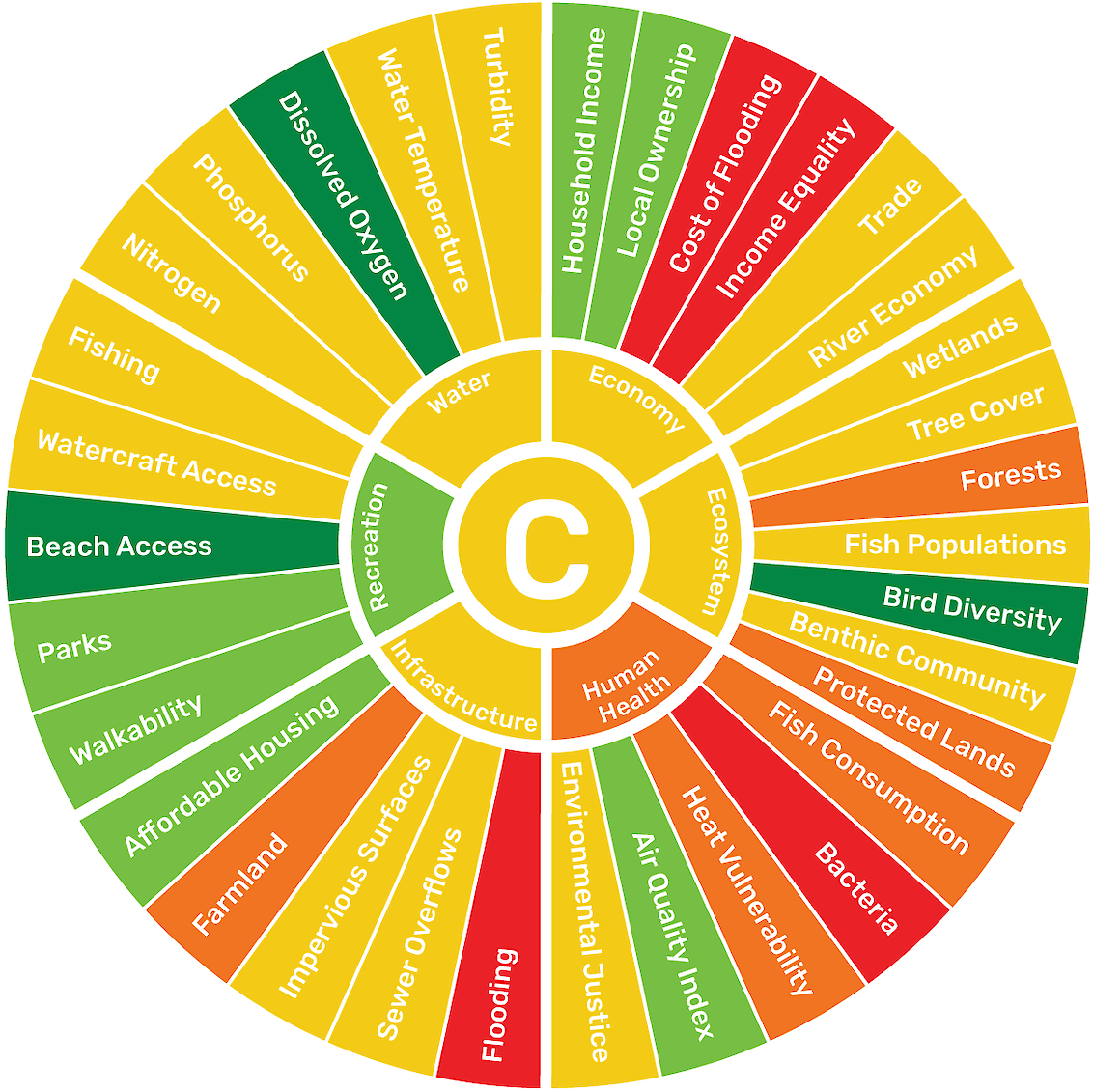The Overall Health Index is the average of the six category scores: Economy, Ecosystem, Human Health, Infrastructure, Recreation, and Water. Status of indicators within these categories was evaluated by comparing data to scientifically-derived thresholds or goals. Region-level indicator scores are area-weighted or population-weighted, as appropriate, to calculate the overall watershed score for each indicator.

Overall conditions are Moderate–Poor Human Health indicators are a concern
Overall, the Southeast Michigan region scored 49%, a C. This suite of indicators and scores reflects the unique challenges faced by urbanized watersheds. Of the six categories, the highest scoring was Recreation with 63%, a B-. Although the state of Michigan boasts 8.5 million acres of public land, only 250,000 of those acres are in Southeast Michigan. This high score indicates that outdoor recreation is still accessible to the area’s residents. The lowest-scoring category was Human Health with 38%, a D+. Infrastructure and Economy both had C- grades, with 42% and 44%, respectively. Ecosystem and Water were slightly better with 49% (C) and 58% (C+), respectively. The lowest-scoring indicator was Bacteria, with a very poor score 6%, an F. The highest-scoring indicator was Bird Diversity with 91% (A), a very good score.
Water quality in this region is driven by nonpoint source pollution, like agriculture and urban runoff, and point source pollution from industry. Because of this, Water (58%) indicators for Turbidity (45%) and Nitrogen (47%) received moderate scores. Water Temperature also had a moderate score (53%), indicating that river temperatures are rising. Phosphorus (60%) had a good score. Dissolved Oxygen had a very good score (89%); so there is adequate oxygen in the river for fishes and other organisms.
The Ecosystem indicators were mostly moderate with C grades for Wetlands (54%), Tree Cover (40%), Fish Populations (41%), and Benthic Community (55%). The amount of Forests (33%) and Protected Lands (32%) in the region is lacking, receiving poor scores (Ds). Human Health conditions are poor in the region. Fish Consumption and Heat Vulnerability had poor scores. The Environmental Justice score was moderate (52%) and the Air Quality score was good (74%). Infrastructure scores ranged from poor (Flooding, 13%) to good (Affordable Housing, 65%). Farmland had a poor score, while Impervious Surface and Sewer Overflows both had moderate scores.
The Cost of Flooding (9%) and Income Equality (12%) both received very poor scores, while Household Income and Local Ownership are in good condition. Trade and the River Economy are both in moderate condition. Recreation scores ranged from moderate (Watercraft Access, 45%) to very good (Beach Access, 90%). Walkability and Parks both had good scores, while Fishing Licenses had a moderate score (54%). Recreational opportunities are becoming more important in the region, supported by a healthy environment, which will improve local quality of life.
